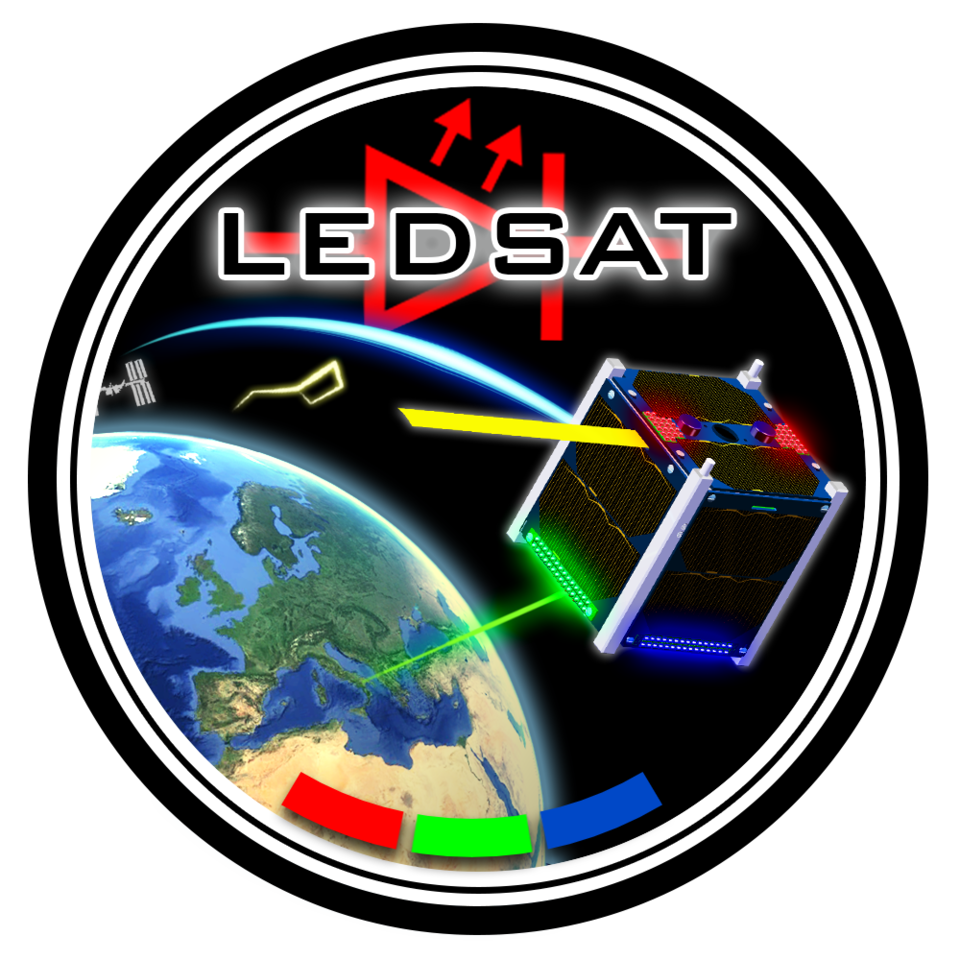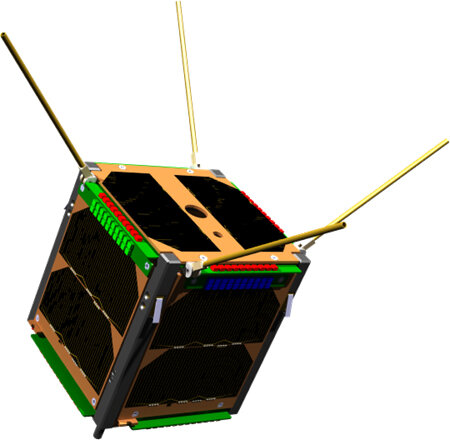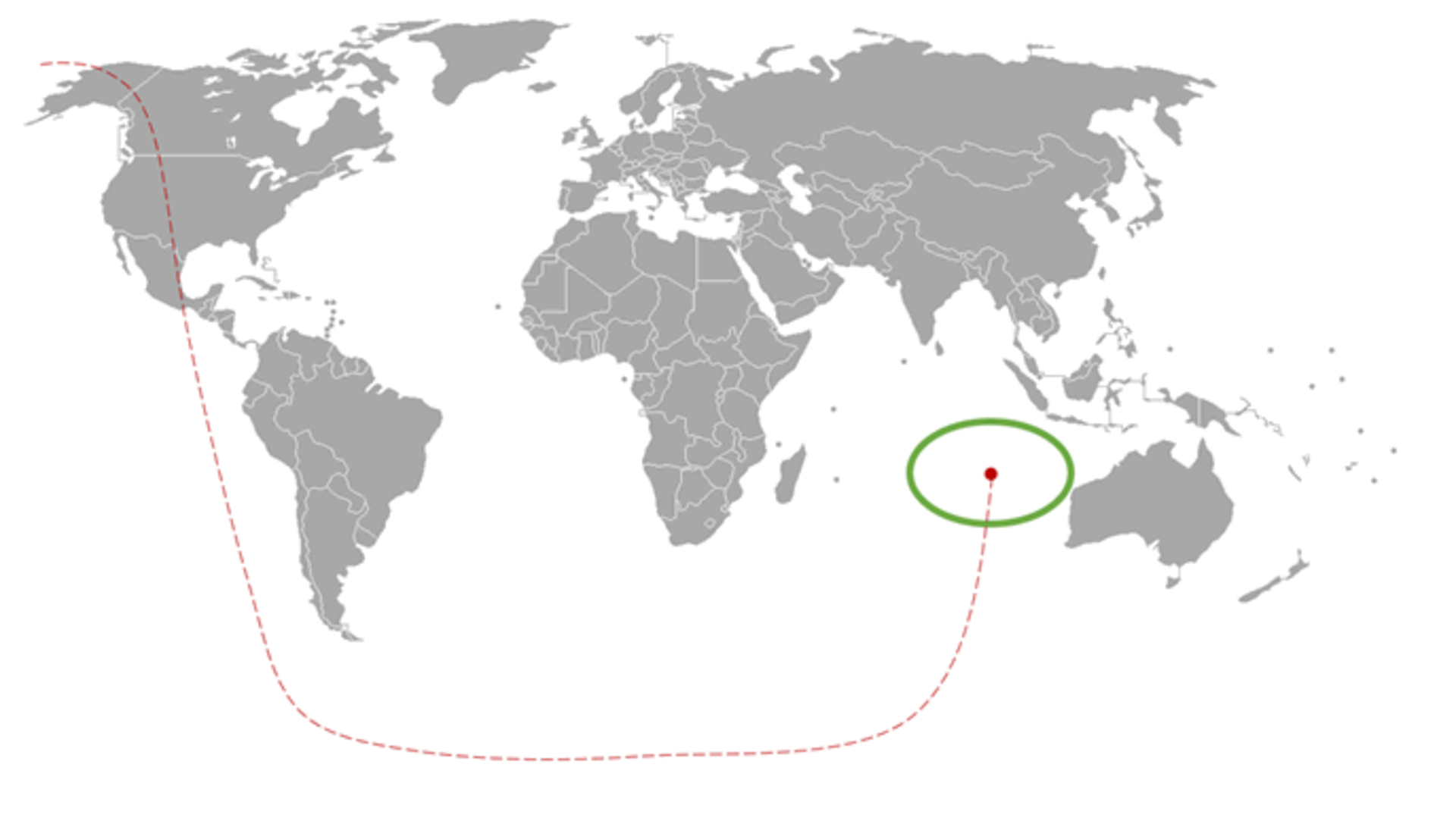Be the first to hear LEDSAT in orbit
LEDSAT, a 1U CubeSat from Sapienza University, will launch on the morning of the 17th of August on the VEGA rocket, as part of the Fly Your Satellite! programme of the European Space Agency. See below how you can join the radio amateur competition to be the first to listen to LEDSAT from orbit!
The LEDSAT mission
The mission has the primary goal of training students in designing, developing and operating a spacecraft. The LEDSAT team hopes to exploit the mission to investigate the performance of a technology based on LEDs for tracking satellites in Low-Earth Orbit.

LEDSAT has, as the name suggests, an LED-based payload onboard that can be commanded by the LEDSAT team to flash for short periods of time. The LEDs will be only observable through telescopes in order to investigate the use of LEDs to support optically tracking the CubeSat. The LEDSAT team collaborated with astronomers for the LEDSAT mission as to not disturb astronomical observations and the LEDs cannot be seen by the naked eye either. The reason is that the magnitude of the LEDs is expected to always be between 8 and 13 and the eye can only see down to a magnitude of 6. The magnitude scale is reversed, meaning a higher value magnitude will result in a less bright object. Additionally, the LEDs can be turned off at any time by the LEDSAT team.
LEDSAT was designed, built, tested and soon to be operated by students at Sapienza University and has received additional support from the Italian Space Agency (ASI) through the IKUNS programme and from the University of Michigan, which helped with conceiving LEDSAT and studying it.
Furthermore, LEDSAT will also carry a radio amateur payload operating in the UHF band. The payload is a digi-peater that, when commissioned, will allow radio amateurs to use the spacecraft as a relay and communicate with other people around the world.
Calling all radio amateurs!

For this reason, the LEDSAT team is hoping that enthusiasts from all continents would help listen to the first signals and signs of life from LEDSAT after antenna deployment and transmission begins, to warmly greet the tiny newcomer into orbit.
To simply listen to the signal broadcasted by LEDSAT, and possibly decode the information contained within, it is not necessary to own a radio amateur license. Also, the necessary equipment can be obtained at a relatively low cost and be very simple to use. We are confident that such activity would give a rewarding experience to those who will accept the challenge!
On the other hand, in order to transmit a signal yourself and use the digi-peater on-board, when it will be activated, it is mandatory to own a radio amateur license. You also have to abide by the radio regulations applicable in the region where your radio equipment is installed. We encourage you to get in touch with your local radio amateur section if you wish to set up your own transmission equipment and obtain a radio amateur license.
Launching soon – get your antennas ready!

The VEGA launcher will take off with LEDSAT as an auxiliary payload from Europe’s Space Port in Kourou, French Guiana. The launch will take place on the 17th of August at 01:47 UTC, which is 03:47 CEST.
LEDSAT will be deployed around 3:31 UTC (5:31 CEST) into a 540 km Sun-Synchronous Orbit (SSO) with the deployment of LEDSAT’s antenna 50 minutes later. Based on current deployment estimates, LEDSAT’s will begin transmitting at 04:21 UTC (6:21 CEST) just west of Australia, see figure above for approximate first transmission area and following ground track. You can also find a preliminary set of Two-Line Elements for the LEDSAT mission here below:
1 00000U 21000ZZZ 21229.14658565 .00000000 00000-0 19534-3 0 18
2 00000 97.4520 302.6160 0009270 219.1400 164.8603 15.07356034000004
LEDSAT’s beacon is transmitted in the UHF band, at a frequency of 435.19 MHz. Please note that the beacon was switched from 1200 to 9600 baud.
Instructions for decoding the LEDSAT beacon are available on LEDSAT website. The activation of the digi-peater will be notified via our social media channels.
The competition will be open for one week after launch, where the winners will be the first with a confirmed recording of LEDSAT from each of the continents; Europe, Africa, Asia, North America, South America and Oceania. The winners will be rewarded with a certificate from ESA, acknowledging their help with acquiring the first signals from LEDSAT, along with a small prize.
To enter the competition, please send in your recording, timestamp of passage over your ground station and the location of your ground station to cubesats@esa.int, and by including “LEDSAT competition” in the subject of the e-mail. When entering the competition, you agree to the ESA Academy data privacy notice and that you have been made aware that you are responsible for any customs/duties when your prize arrives in your country.
Read more about LEDSAT here.


